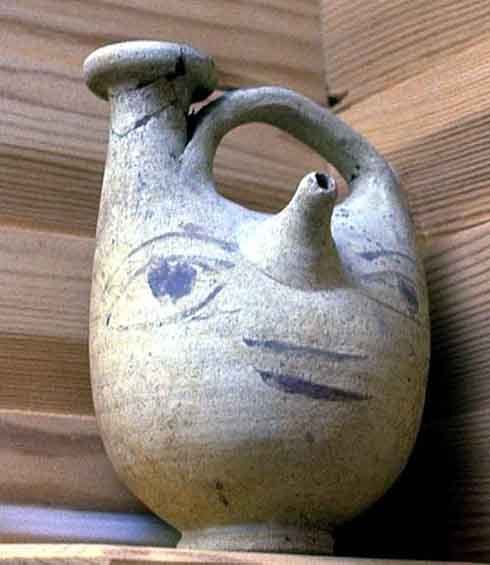Phoenician Baby Bottle

Annotation
The Phoenician terracotta vessel features a human face, the nose forming a narrow spout. The bottle is an archaeological find from Carthage, near modern Tunis, dated to 399 BCE-200 BCE. Archaeologists believe this object was a baby bottle. It could have been used to feed diluted wine with honey or other sweet liquid such as juice, milk, or thin porridge, cooked cereal made from ground grain. Such vessels, called guttus, were placed with Greek infant burials of the same period, placed in proximity to the infant's head. Many such examples have been found in at Greek and Phoenician sites, in various forms, such as a dog bottle dated to c.300 BCE-64 BCE from Sousse, Tunisia, and a pomegranate-shaped Greek bottle from 399 BCE-200 BCE found in Italy. The whimsical shapes and decorations are appealing to children's appetites. These bottles may also have aided the process of weaning the child from breast milk.
Credits
Ceramic Baby bottle with face. Phoenician, from Carthage. Tunisia. Photo by Kathleen Cohen, 4th c BCE-3rd c BCE. Available online at World Image Kiosk (s.v. "Punic") (accessed March 31, 2009).